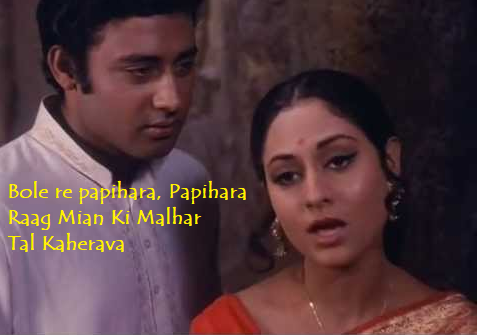Raaga Based Song of the Day: Bole re papihara, papihara ….
Raag Mian Ki Malhar, Tal Kaherava
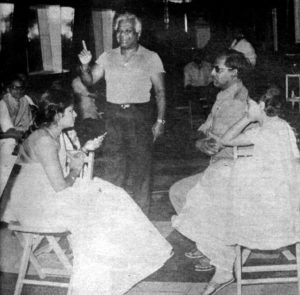
Having raaga based songs of the day, without these two Vs – that is Vani Jairam and Vasant Desai – sounds a bit out of place. They featured together in the 1971 Hrishikesh Mukherjee movie Guddi that starred Jaya Bahaduri in the title role with Dharmendra as film-star Dharmendra that she was fascinated by as any young girl of her age. The song was penned by Gulzar.
First, a word about Vani Jairam. Vani Jairam or Jayaram is known as the Meera of modern India. In her four and half decades of singing career she has recorded more than 10000 songs in over 1000 Indian movies including Hindi, Tamil, Telugu, Malyalam, Maratha, Odiya, Bengali and Gujarati. She has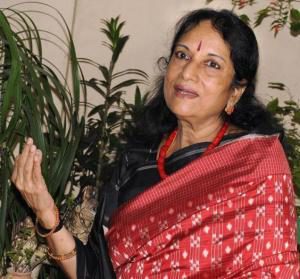 been awarded the National Award for Best Female Playback Singer three times and has won two Filmfare Awrads: One for Best Female Playback Singer in 1980 (for Meera’s song Mere to Giridhar Gopal composed by Pandit Ravi Shankar in Raag Khammaj, Tal Dadra/Hinch) and one in 2013, the South India Filmfare Award for Lifetime Achievement.
been awarded the National Award for Best Female Playback Singer three times and has won two Filmfare Awrads: One for Best Female Playback Singer in 1980 (for Meera’s song Mere to Giridhar Gopal composed by Pandit Ravi Shankar in Raag Khammaj, Tal Dadra/Hinch) and one in 2013, the South India Filmfare Award for Lifetime Achievement.
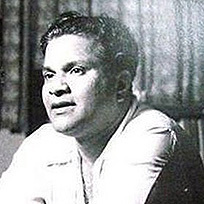 Vasant Desai lived between 9th June 1912 and 22 Dec 1975. Everyone has heard his song: Ai malik tere bande ham penned by Bharat Vyas for the 1953 V Shantaram movie Do Aankhen Barha Haath. I have already given you a song from his 1959 Vijay Bhatt movie Goonj Uthi Shehnai: Tere sur aur mere geet (Raag Bihag, Tal Dadra). He also composed for 1955 V Shantaram movie Jhanak Jhanak Payal Baaje and a number of other movies.
Vasant Desai lived between 9th June 1912 and 22 Dec 1975. Everyone has heard his song: Ai malik tere bande ham penned by Bharat Vyas for the 1953 V Shantaram movie Do Aankhen Barha Haath. I have already given you a song from his 1959 Vijay Bhatt movie Goonj Uthi Shehnai: Tere sur aur mere geet (Raag Bihag, Tal Dadra). He also composed for 1955 V Shantaram movie Jhanak Jhanak Payal Baaje and a number of other movies.
We have completed seventy-six days of Raaga Based Songs of the Day. Our first post in the series was titled ‘Raaga Based Song Of The Day #1’ and the song was a Mohammad Rafi and Lata Mangeshkar song from the 1970 Shakti Samanta movie Pagla Kahin Ka: Tum mujhe youn bhula na paoge. It is in Raag Jhinjhoti, Tal Kaherava.
Our seventy-sixth post or the last post was titled ‘Raaga Based Song Of The Day #76‘ and the song was a Lata Mangeshkar song from the 1966 Raj Khosla movie Mera Saya starring Sunil Dutt and Sadhana: Tu jahan jahan chalega mera saya saath hoga. It is in Raag Nand, Tal Kaherava.
This blog has a number of posts on Raaga based songs in Hindi movies titled similarly; for example: ‘The Best Raaga Based Songs in Hindi Movies – Raaga Bhairavi – Part III‘.
In the last seventy-six days of sharing Raaga based songs of the day, I have given you songs based on Raag Jhinjhoti, Gara, Bhimpalasi, Madhuvanti, Shivaranjani, Bihag, Pahadi, Sarang, Pilu, Bhairavi, Khammaj, Charukesi, Kalyan or Yaman, Desh, Malgunji, Kirwani, Kedar, Bageshri, Megh Malhar, Bhupali, Ahir Bhairav, Malkaush, Mand, Adana, Kafi, Rageshri, Jaunpuri, Tilang, Janasammohini, Chayanat, Shuddha Kalyan, Gaur Sarang, Jogiya, Asavari, Maru Bihag, Durga, Lalit, Puria Dhanashri, Bhinna Sahdja, Sohani, Multani, Patdeep, Jaijaiwanti, Tilak Kamod, Hemant, Basant Mukhari, Gujri Todi, Kalavati, Hamir, Bhatiyar, Gawati, Shyam Kalyan, Gorakh Kalyan, Madhamat Sarang, Manj Khammaj, Darbari Kanada, Vibhas, Shankara, Bahar and Nand; making it a total of 60 raagas. The raagas that have been repeated so far are Pahadi, the raaga of my home place in the Himalayas, Maru Bihag, Raag Kirwani, Jhinjhoti, Bhairavi, Gara, Basant Mukhari, Malkauns and Bhairavi. Today, I am giving you a new Raag Mian Ki Malhar. That makes it a total of 61 raagas so far.
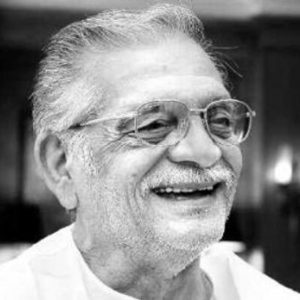
Today’s song has been sung by Vani Jairam on the lyrics of Gulzar and composition by Vasant Desai. As I said, it is in Raag Mian Ki Malhar, Tal Kaherava. Finally, lets talk a bit about Gulzar, the most versatile Lyricist that we have had in Hindi films: He has been poet, lyricist, director, dialogue, story and screen-play writer. He was awarded Padma Bhushan, the third-highest civilian award, the Sahitya Akademi Award and the Dadasaheb Phalke Award — the highest award in Indian cinema. He has won several Indian National Film Awards, 20 Filmfare Awards, one Academy Award and one Grammy Award.
Shall we go head-long into the song? No, first, lets take up the value added learning of today. We have already taken up the list of Hindustani Classical Music Festivals in India and Abroad. Today, we shall take up the list of Carnatic Classical Music Festivals in India and Abroad.
So, today, you are really interested in Indian Classical Music and would like to attend a festival near your place. Here is a list of festivals that are held in India for Carnatic Classical Music (Source: Wikipedia):
| Sl. No. | Festival Name | Ist Yr | Country | State | City |
| 1. | Tyagaraja Aradhana | 1846 | India | Tamilnadu | Thiruvaiyaru |
| 2. | Chembai Sangeetholsavam | 1910 | India | Kerala | Guruvayur |
| 3. | Sankat Mochan Sangeet Samaroh | 1920 | India | U.P. | Varanasi |
| 4. | Madras Music Season | 1927 | India | Tamilnadu | Chennai |
| 5. | Kalasagaram Annual Cultural Festival | 1967 | India | A.P. | Secunderabad |
| 6. | Cleveland Thyagaraja Festival | 1978 | USA | Ohio | Cleveland |
| 7. | Parampara Series – Andhri | 1997 | India | Telengana | Hyderabad |
| 8. | Swathi (Navarathri) Sangeethotsavam | India | Kerala | Thiruvanthapuram | |
| 9. | Chennaiyil Thiruvaiyaru | 2005 | India | Tamilnadu | Chennai |
| 10. | Theerthapada Sangeethotsavam | 1988 | India | Kerala | Thiruvanthapuram |
As I said, today’s song is in Raag Mian Ki Malhar, Tal Kaherava.
Raag Mian Ki Malhar is a variation of Raag Malhar that belongs to Kafi Thaat. Earlier, I had given you a song in Raag Megh Malhar: Dukh bhare din beete re (Please see: ‘Raaga Based Song Of The Day #20‘). Its Jati is Shadhav – Audhav. Mian Ki Malhar is a variation introduced by Mian Tansen (one of the ratnas in the court of the Emperor Akbar), which follows the swaras: S R g m P D n N. Though Mian Ki Malhar and Raga Bahar have the same tone material, the melodic movements in Mian Ki Malhar are rather serious and slow, moving more in the lower tetra-chord, whereas movements in Bahar are more sprightly and centre around the high Sa. Bhatkhande describes this raag as a mixture of Malhar and Kanada. This melody is associated with torrential rain and can thus be sung during rains at any time.
Some other songs composed in Raag Mian Ki Malhar are: Baadal ghumad bhar aaye (Tal Tintal), Bhaye bhanjana…darasa tere maange main tera pujari (Tal Jhaptal), Karo sab nichhavar (Tal Jhaptal), Na na barso baadal (Tal Kaherava), Nach mere mora zara nach (Tal Dadra), and Nach re mayur (Tal Kaherava).
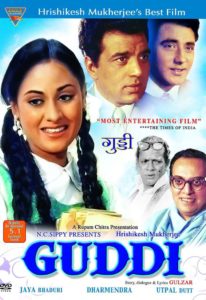
The song Bole re papihara, papihara is from the 1971 Hrishikesh Mukherjee movie Guddi starring Jaya Bahaduri and Dharmendra. It was later remade in Tamil as Cinema Paithiyam (1975) starring Jayachitra and Kamal Haasan.
All three songs of the movie were sung by Vani Jairam. Besides the song that I am giving you, the other two are: Hari bin kaise jiyun, and Hamako man ki shakti dena.
Please enjoy in Raag Mian Ki Malhar, Tal Kaherava: Bole re papihara, papihara…….
Bole re papiiharaa papiiharaa
Nit ghan barase, nit man pyaasaa
Nit man pyaasaa, nit man tarase
Bole re…
Palako.n par ik buu.Nd sajaae
BaiThii huu.N saavan le jaae
Jaae pii ke des me.n barase
Nit man pyaasaa, nit man tarase
Bole re…
Saavan jo sa.ndesaa laae
Merii aa.Nkh pe motii chhaae
Jaae mile baabul ke ghar se
Nit man pyaasaa, nit man tarase
Bole re…
We have intended to learn about Raaga based music whilst we entertain ourselves with Raaga based songs. So, lets, once again, take stock of our collective learning so far:
- On the first day we learnt about the Raaga system devised by Pandit Vishnu Narayan Bhatkhande, which is the prevalent system in Hindustani Classical Music and based on ten Thaats.
- On the second day we learnt about Tal or Taal.
- On the third day we learnt about characteristics of Raagas that included Swar, Jati, Thaat, Arohana and Avarohana, Vadi, Samvadi and Pakad.
- On the fourth day, we learnt about Sargam.
- On the fifth day, we learnt about notations used in Indian classical music or simply Swar Lipi.
- On the sixth day, we learnt about the Ras (sentiments) that Raagas evoke.
- On the seventh day, we learnt about various types of Swar: Shuddha, Achal, Vikrut, Komal and Teevra.
- On the eighth day, we learnt the parts of a composition in Indian Classical Music.
- On the ninth day, we learnt the names of some of the popular instruments used in Indian Classical Music.
- On the tenth day, we learnt about the sources of names of Raagas.
- On the eleventh day, we learnt about why Bhairavi is the first raag to be taught to beginners and also why it is the last in a performance.
- On the twelfth day, we learnt about Khammaj Thaat.
- On the thirteenth day, we learnt about Tal Punjabi Theka or Sitarkhani.
- On the fourteenth day, we learnt about Alap.
- On the fifteenth day, we learnt about List of Raagas (Raagmala) in my favourite book: Sri Guru Granth Sahib.
- On the sixteenth day, we learnt about tips for raaga identification.
- On the seventeenth day, we learnt the basics of Gharana system.
- On the eighteenth day, we learnt about Filmi Sangeet.
- On the nineteenth day, we learnt about the commonest Tal in Raagas: Tintal.
- On the twentieth day, we learnt about the Kafi Thaat.
- On the twenty-first day, we learnt a little more in detail about the classification of Raagas.
- On the twenty-second day, we learnt the essential differences between Bhairavi and Bhairav.
- On the twenty-third day, we learnt a little more in detail about the Jati or Jaati of a raaga.
- On the twenty-fourth day, we learnt details of Thaat Bilawal, the most basic thaat in the Bhatkhande’s system of raagas.
- On the twenty-fifth day, we learnt about Tintal.
- On the twenty-sixth day, we learnt in detail about the Raaga – Samay linkage.
- On the twenty-seventh day, we learnt about Lehar.
- On the twenty-eighth day, we learnt about the history of the Hindustani Music.
- On the twenty-ninth day, we learnt about Dhrupad.
- On the thirtieth day, we learnt about Rupaktal that I was introduced to, a few months back, by my friend Anand Desai.
- On the thirty-first day, we learnt about Khayal.
- On the thirty-second day, we learnt about Thumri.
- On the thirty-third day, we learnt about Tappa.
- On the thirty-fourth day, we learnt about Tarana.
- On the thirty-fifth day, we learnt about Tal Dipchandi (Moghali).
- On the thirty-sixth day, we learnt about Tabla.
- On the thirty-seventh day, we learnt about Kirtan.
- On the thirty-eighth day, we learnt about Pakhawaj.
- On the thirty-ninth day, we learnt about Hori.
- On the fortieth day, we learnt about Dadra.
- On the forty-first day, we learnt about Kajri.
- On the forty-second day, we learnt about Chaiti.
- On the forty-third day, we learnt about Sarangi.
- On the forty-fourth day, we learnt about Shehnai.
- On the forty-fifth day, we learnt about Sarod.
- On the forty-sixth day, we learnt about Bansuri.
- On the forty-seventh day, we learnt about Ektal and Tanpura.
- On the forty-eighth day, we learnt about Veena.
- On the forty-ninth day, we repeated our learning of Veena with a small excitement added.
- On the fiftieth day, we learnt about Dilruba/Esraj.
- On the fifty-first day, we learnt about Jaltarang.
- On the fifty-second day we learnt about Qawwali.
- On the fifty-third day, we learnt about Sitar.
- On the fifty-fourth day, we learnt about Surbahar.
- On the fifty-fifth day, we learnt about Harmonium.
- On the fifty-sixth day, we learnt about Santoor.
- On the fifty-seventh day, we learnt about Swarmandal.
- On the fifty-eighth day, we learnt about the Shruti Box.
- On the fifty-ninth day, we learnt about Alankar.
- On the sixtieth day, we learnt about singing in Aakaar.
- On the sixty-first day, we learnt about the Classification of Indian Musical Instruments.
- On the sixty-second day, we learnt a little about Carnatic Music.
- On the sixty-third day, we learnt about Natya Shastra.
- On the sixty-fourth day, we learnt about evolution of musical instruments in India down the ages.
- On the sixty-fifth day, we learnt about Riyaaz.
- On the sixty-sixth day, we looked at a list of Raagas in Hindustani Classical Music.
- On the sixty-seventh day, we learnt about the health benefits of raagas.
- On the sixty-eighth day, we learnt a little more comprehensively about the moods and emotions that raagas evoke.
- On the sixty-ninth day, we learnt about a mobile application to help identify raagas.
- On the seventieth day, we learnt about Melakarta Raagas.
- On the seventy-first day, we learnt about Sangita Makarand.
- On the seventy-second day, we learnt about TaalMala an Android application for personalized accompaniment of musical instruments during Riyaaz or even during Concert.
- On the seventy-third day, we learnt about Indian Classical Ragas, an Android application for mobile phones.
- On the seventy-fourth day, we learnt about Saregama Classical, another application for Classical Raagas.
- On the seventy-fifth day, we learnt about a free online service available to learn Indian Classical Music.
- On the seventy-sixth day, we learnt about List of Hindustani Classical Musical Festivals in India and Abroad.
- And today, on the seventy-seventh day, we learnt about List of Carnatic Musical Festivals in India and Abroad.
There is much more still to be learnt and enjoyed.
Please stay tuned!
